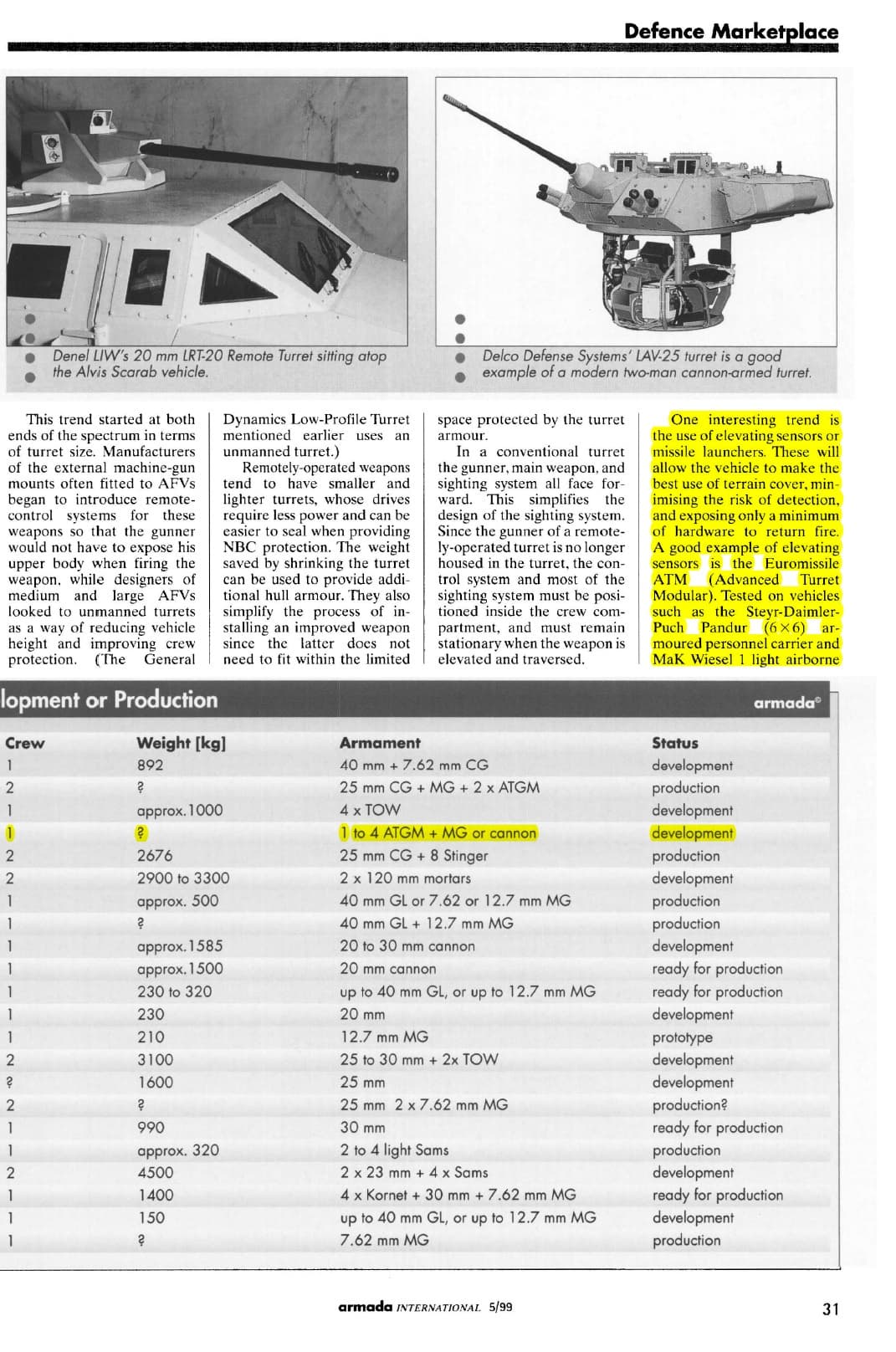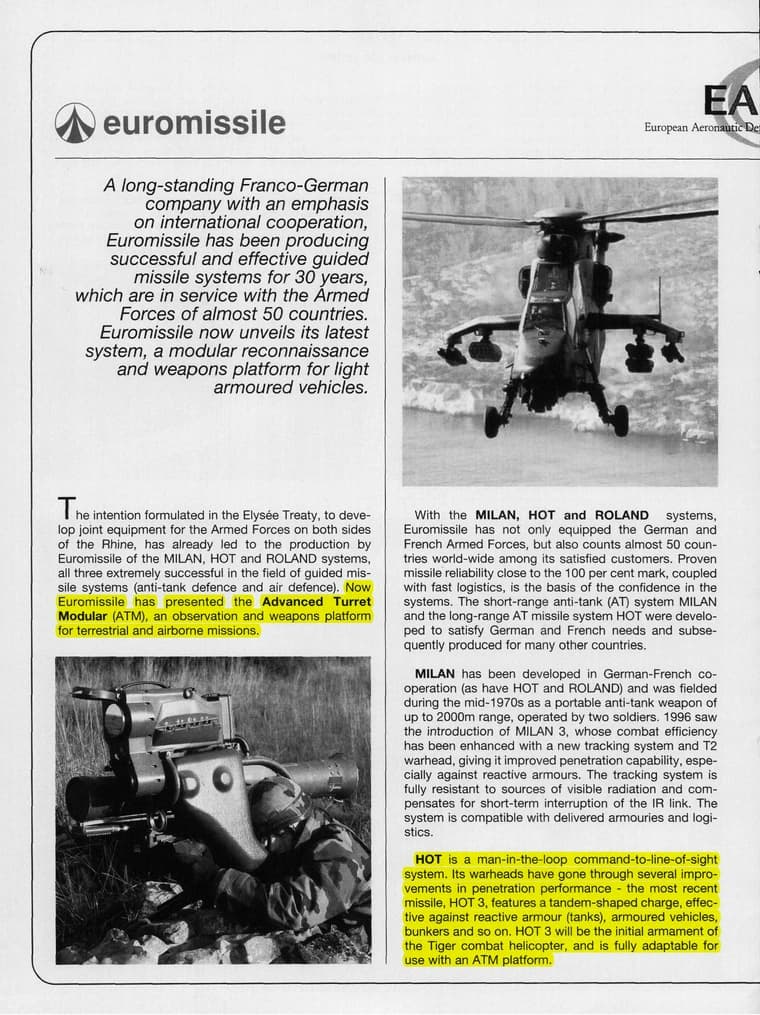
Made in cooperation with @Armen_Lozone
One javelin, two javelin
Nearing the end of its service life, the Faun Kraka was becoming insufficient for the needs of the German Airborne units. So, the Army began looking to better options. Key features were mobility, small arms fire and shrapnel resistance as well as air transportability in common NATO transport aircraft.
Porsche was part of this competition however was not able to provide exactly the features that interested the Bundeswehr. Initially the Bundeswehr cancelled the project. But Porsche and MAK continued development because of foreign interest.
Rheinmetall was a lot more successful later when the demand in Germany was brought up again. The Wiesel was eventually chosen from among the candidates that competed in the trials. Named because of its small size and agility.
The Wiesel was also preferred due to its ability to be integrated with a wide assortment of weapons. You can see many of them in game and in various images online. However, one of the most interesting ones to me, is the ATM prototype series.
In 1998 the Wiesel 1 Advance Turret Modular (ATM) was shown during an open day of “Luftlandebrigade 26 Saarland”. The Wiesel 1 ATM is designed for a wide range of tasks from reconnaissance to anti-tank to surveillance purposes.
Today we present to you the third version of the series, the One javelin, two javelin, cannon and ATGM capable terror of the battlefield.
Interestingly, the ATM system can also be used with the PARS 3 MR Laser beam riding missile. More on that in another post. (JPz Fuchs mit PARS 3 MR: Unwavering resolve)
ATM system
The ATM Weapon system, introduced in 1997, serves as a versatile platform for both observation and reconnaissance, in addition to functioning as a weapon system.
This system comprises three key components: a stabilized, elevated sensor platform capable of rising up to 1.5 meters above the roof of the Wiesel, an internal control system located within the vehicle, and a turret equipped with HOT missiles along with either a cannon or a machine gun.
Designed to fulfil the operational needs of the French and German armed forces, the HOT/ATM system can be mounted on light tracked and wheeled armoured vehicles. It is engineered to perform advanced observation tasks while also engaging targets with HOT anti-tank guided missiles (ATGMs) at a maximum range of 4,000 meters.
The turret is equipped with a mast-mounted stabilized sensor pod that includes a colour CCD camera, a thermal imaging camera (10 µm), an electro-optical block (1 µm), and a laser rangefinder. The sensor pod allows for increased situational awareness, automatic target tracking, and missile tracking.
Inside the vehicle, the monitoring and display module enables the operator to conduct battlefield surveillance, accurately localize targets on a digital terrain map, automatically track targets, select targets for engagement, and launch HOT missiles with minimal response time.
The turret is unmanned, with the operator positioned on the right side of the vehicle and the vehicle commander seated on the left.
Specifications
—Survivability—
Crew: 3 (Gunner/Loader + Commander + Driver)
Armour (front, sides, rear): 8mm, 8mm, 8mm
—Mobility—
Weight: 2.8t
Engine: Audi 2.1 L 5-cylinder in-line turbo-diesel
Power: ~87 hp
P/W: 31.07hp/t
Top speed:
- Forward: 81 kmph
- Reverse: 30 kmph
Suspension: Torsion bar
—Equipment—
Optics: Colour CCD camera
Zoom: x 10 (16° to 1.6°)
Turret elevation: -15°, +45°
Turret rotation: 40°/s
Stabiliser: Optics only
IR search: No
IR Track: Yes
Optics mast height: 1.5m above hull roof (fully extended)
TVD: Yes, 7.5μ - 10.5μ CMT
- FOV:
-
- Wide: 9 x 12°
-
- Narrow: 2.7 x 3.6°
LRF: Yes
- Narrow: 2.7 x 3.6°
–Weapon system–
Armament (configuration 1): 1 x RMK-30 30mm gun + 1 x HOT-2/3 ATGMs (+ 6 in storage) (or PARS 3 MR)
Armament (configuration 2): 1 x RMK-30 30mm gun + 2 x HOT-2/3 ATGMs (+ 6 in storage) (or PARS 3 MR)
RMK-30 cannon

In early 1997, Mauser-Werke Oberndorf Waffensysteme announced preliminary information regarding a new 30 mm cannon, known as the Rückstoßfreie Maschinenkanone 30 (RMK-30), developed under contract with the German BWB.
The initial deployment of the Mauser RMK 30 mm cannon will be on the EuroCopter UH Tiger helicopter utilized by the German Army. Its recoilless design allows for installation on very light platforms, such as soft-skinned vehicles, which previously could not accommodate a weapon of this calibre.
A recoilless weapon effectively mitigates the recoil impulse by utilizing the gases that escape backward during firing. The RMK 30 achieves this through a movable cartridge chamber and an integrated nozzle.
In addition to its recoilless feature, the RMK 30 incorporates several other characteristics, including a three-chamber revolver-type breech cylinder (similar to those found in other Mauser firearms), a movable cartridge chamber, linkless ammunition feeding from the front with options for left or right feed, telescoped ammunition with a compact charge, a combustible case, and an inductive primer.
The RMK 30 is designed for precise and sustained firing, with Mauser reporting that dispersion patterns during testing have been reduced to less than 50 percent compared to traditional cannons.
The cannon boasts a cyclic rate of fire of 300 rounds per minute, weighs 100 kg, and features a barrel length of 1,700 mm. The initial round being developed is an armor-piercing (AP) type with a caliber of 30 x 280 mm and a muzzle velocity of 1,200 m/s. Additionally, an armor-piercing fin-stabilized discarding sabot round is also in development.
The first prototype of the RMK 30 was completed in 1997 and underwent manned firing trials mounted on a MaK Wiesel 1 light tracked armored weapon carrier. Since then, a second version has been constructed, incorporating a few enhancements.
According to Mauser, the RMK 30 is part of a comprehensive integrated weapon system that, in helicopter applications, will also encompass various other subsystems.
–RMK-30–
Caliber: 30 x 280mm
Rate of fire: 300 RPM
Magazine capacity: ~72-78 (estimated in magazine) (+ 4-5 in belt and 3 in revolving chamber for a total of 79-86)
Ammunition:
- AP
-
- APFSDS:
-
- Penetration: Estimated 110mm (LO)
-
- Ammunition mass: 655g
-
- Projectile mass: 280g
-
- Velocity : 1350 m/s
-
- Launch energy: 255kJ

![]()


![]()
![]()
![]()
Reasoning for Ammo count

Extra information
The RMK-30 utilised CTA (Case telescoped ammunition) much like how the HSTV-L uses. Considering that, I’m usure of how it will be implemented but it should give greater penetration amounts.
The RMK-30 was also planned to be integrated into a submarine warfare role:


Critical Information
According to new information regarding the ATM/HOT system, not only is it compatible with the Trigat/PARS 3 MR ATGM but also the Kornet-E ATGM (both use laser beam guidance). This makes it potentially a much more deadly ambush predator since the Kornet has the one feature the other missiles lack. Speed.
Visual references


Sources
Tankograd - Wiesel 1 ATM (trimmed pdf)
Relevant pages of PDF



- https://www.army-guide.com/eng/product943.html
- https://www.army-technology.com/projects/hot/
- https://www.army-guide.com/eng/product2104.html
- German ATGM Vehicles
- Rheinmetall Landsysteme Wiesel (Weasel): Photos, History, Specification
- HOT anti-tank missile system | Missilery.info
- Rheinmetall Wiesel - Wikiwand
- https://www.army-guide.com/eng/product3602.html
- Overview — 30-mm RMK 30 — Aircraft Guns and Combat Vehicle Guns — Artillery/Guns — Weapons — Military Periscope
- About: Rheinmetall RMK30
- WaffenHQ: Rückstoßfreie Maschinenkanone RMK 30
- RMK 30. Rheinmetall-Mauser | British Ordnance Collectors Network
- Yes
- No
































